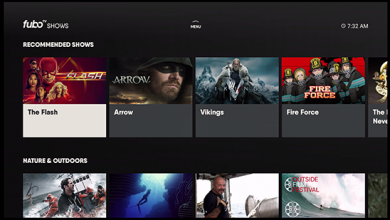The Benefits of Staff Tracking Systems in the Workplace

In the dynamic and highly competitive world of business today, organizations are consistently on
the lookout for strategies to optimize their operations and enhance productivity. One innovative
solution that has gained popularity in recent years is the implementation of staff tracking
systems in the workplace. These systems utilize advanced technologies to monitor and track
employee activities, providing valuable insights for better decision-making and resource
allocation.
In this post, we’ll explore the benefits of these systems and how they can positively impact
businesses of all sizes.
Enhanced Employee Accountability and Productivity
One of the primary benefits of staff tracking systems is the promotion of employee
accountability. By tracking employees’ activities and work progress, these systems provide an
objective measure of productivity. Instead of relying solely on subjective evaluations, managers
can utilize concrete data to assess employee performance and set realistic targets. This
transparency fosters a sense of responsibility among employees and encourages them to
consistently meet or exceed expectations.
Moreover, staff tracking systems improve productivity levels within organizations. When
employees are aware that their work is being monitored, they tend to stay focused and avoid
distractions. This heightened level of concentration translates into increased efficiency and
output. Additionally, the availability of real-time data allows managers to identify bottlenecks or
inefficiencies in workflows and take prompt action to address them, thereby optimizing overall
productivity.
Streamlined Task and Project Management
Efficient task and project management are crucial for the success of any organization. Staff
tracking systems play a vital role in streamlining these processes. By using these systems,
managers can easily allocate tasks to employees based on their skills, availability, and
workload. This ensures that the right person is assigned to the right task, minimizing the risk of
miscommunication or delays.
Real-time project monitoring is another valuable feature offered by staff tracking systems.
Managers can track the progress of projects, view the status of individual tasks, and identify
potential roadblocks. This visibility enables them to make informed decisions, reassign
resources if needed, and maintain project timelines. Additionally, these systems facilitate
collaboration among team members, as everyone can access project updates and communicate
more effectively, even when working remotely.
Optimized Resource Allocation and Workload Distribution
Efficient resource allocation is essential for maximizing productivity and minimizing costs. Staff
tracking systems provide valuable insights into resource utilization, allowing managers to
identify areas of overutilization or underutilization. With this information, they can make
data-driven decisions to optimize resource allocation and ensure that the right resources are
allocated to the right projects.
Similarly, staff tracking systems assist in workload distribution. By monitoring employees’
workloads and capacity, managers can identify imbalances and redistribute tasks accordingly.
This helps prevent burnout and ensures that work is evenly distributed, enhancing employee
well-being and overall productivity. By addressing workload imbalances proactively,
organizations can maintain a more harmonious work environment and achieve better outcomes.
Employee Development and Training
Staff tracking systems also play a significant role in employee development and training, which
is a critical aspect of organizational success. In fact, one study revealed that companies that
invest in employee development and training have a 24% higher profit margin than those that
don’t prioritize employee learning and growth. This statistic emphasizes the immense value that
employee development brings to businesses.
By utilizing staff tracking systems, managers can objectively assess employees’ skills and
competencies. These systems provide valuable data on performance and productivity, allowing
managers to identify areas for improvement. Armed with this information, managers can then
create targeted training programs and development opportunities tailored to each employee’s
needs. This personalized approach not only enhances employees’ skills but also fosters a sense
of job satisfaction and engagement.
Additionally, staff tracking systems support coaching and performance improvement initiatives.
With access to real-time performance data, managers can provide timely feedback, identify
strengths and weaknesses, and offer guidance for improvement. This continuous feedback loop
fosters a culture of growth and development within the organization, ultimately contributing to
employee engagement and retention.
Ensuring Workplace Safety and Security
Employee safety and security are paramount concerns for organizations. Staff tracking systems
can significantly enhance workplace safety measures. By monitoring employees’ movements
and activities, these systems can identify potential hazards or unsafe behaviors. In the event of
an emergency, such as a fire or natural disaster, tracking data can aid in coordinating
evacuation efforts and ensuring the well-being of all employees.
Moreover, staff tracking systems can help in monitoring access to restricted areas. By setting up
geofences or using RFID technology, organizations can limit access to sensitive locations and
track who enters or exits these areas. This enhances security measures and mitigates the risk
of unauthorized access or breaches.
Addressing Concerns and Ensuring Privacy
To ensure the successful implementation of staff tracking systems, addressing privacy concerns
is crucial. Organizations should prioritize transparency and communication to build trust with
employees. Clearly communicating the purpose, scope, and benefits of these systems helps
alleviate concerns about intrusive monitoring.
It’s equally important for organizations to adhere to best practices and legal considerations.
Implementing safeguards like data anonymization, restricted access to authorized personnel,
and compliance with privacy laws, protects employee privacy. Striking a balance between
productivity and respecting individual privacy rights creates a harmonious and transparent work
environment.

Final Thoughts
Staff tracking systems offer a wide range of benefits for organizations, from enhanced employee
accountability and productivity to streamlined task management and optimized resource
allocation. These systems also support employee development, ensure workplace safety, and
address privacy concerns.
As businesses continue to evolve in a rapidly changing world, implementing staff tracking
systems can be a valuable investment, allowing organizations to thrive and stay ahead of the
competition. So, make sure you explore the implementation options based on your specific
organizational needs and unlock the potential of staff tracking systems right away.




